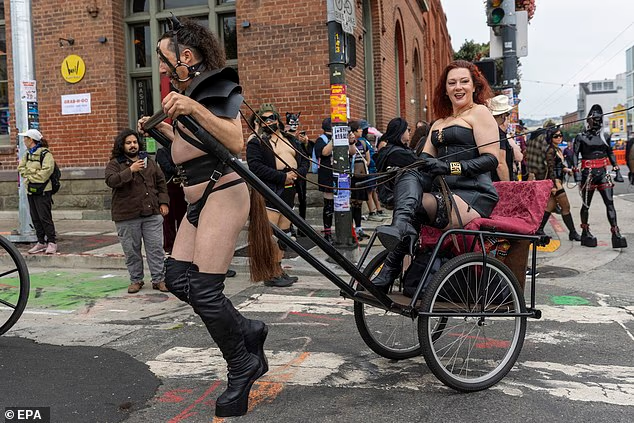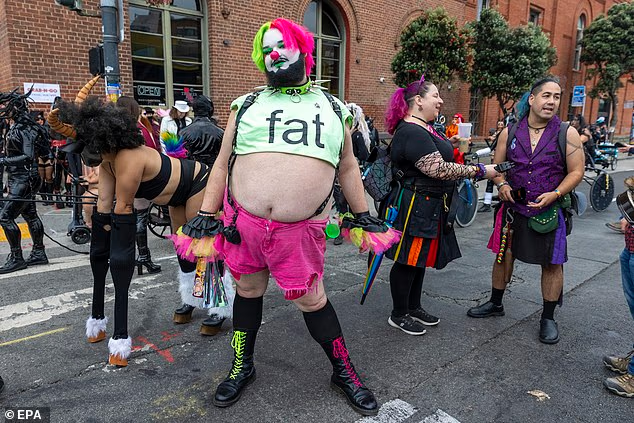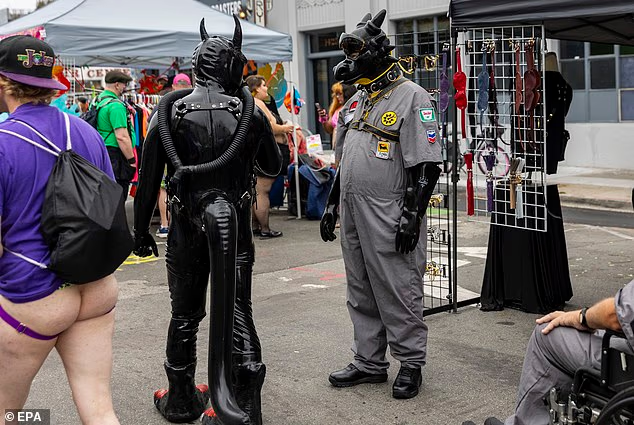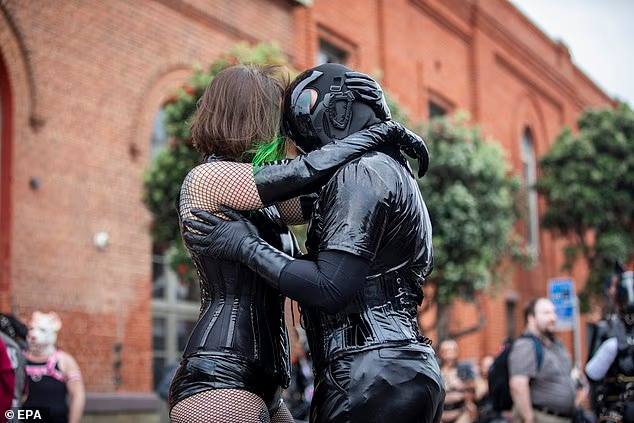CELEBRITY
America’s kinkiest festival is back! Wild photos from San Francisco fetish fair celebrates all things leather
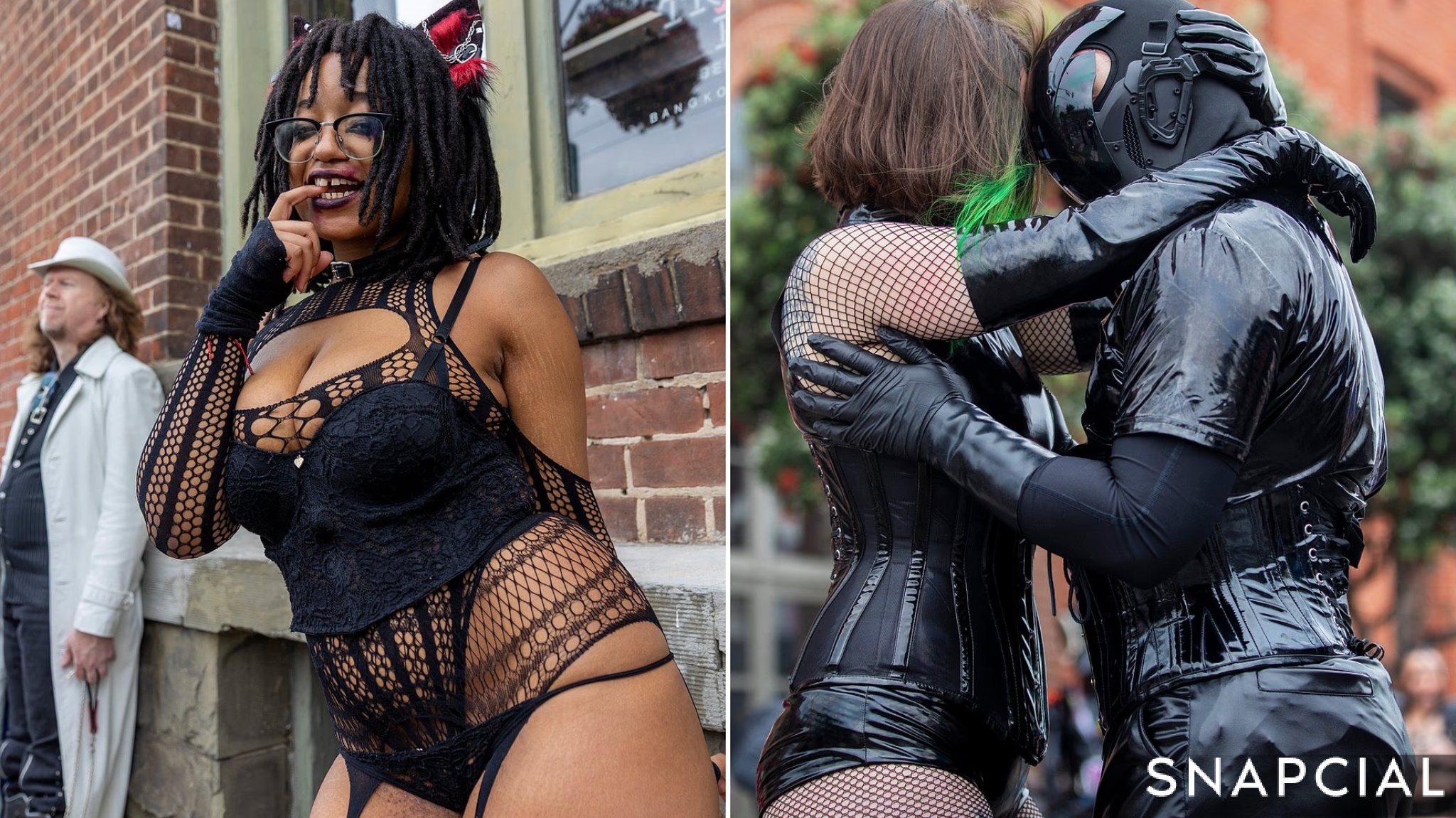
San Francisco turned up the heat this weekend as the famed Folsom Street Fair roared back to life, unleashing dazzling displays of leather, latex, nudity, and boundary-pushing play. Once again proving itself one of the world’s most audacious celebrations of fetish culture, the event drew thousands of participants and onlookers eager to witness one of the most unabashed public expressions of kink, sex positivity, and alternative identity.
Streets Pulsing With Leather and Liberation
Spanning blocks of San Francisco’s South of Market (SoMa) district, the fair turned everyday city streets into an open-air playground for all things bold. Attendees donned harnesses, masks, collars, chains, and minimal clothing — some chose near-naked bodies, others high-concept bondage wear. No single aesthetic dominated; the variety was part of the spectacle.
Vendors hawked an array of gear: spanking paddles, fetish boots, latex suits, sex toys, and art pieces. In one surprising twist, a standout hit this year was a miniature leather harness for the Labubu — a plush toy turned viral accessory. Yes, even stuffed animals got their turn in the kink spotlight. The tiny harnesses reportedly sold out quickly.
Performances threaded through the crowd: rope bondage demonstrations, drag showcases, wrestling matches, and more experimental acts spread across stages and alley corners. A naked game of Twister reportedly caused cheers, gasps, and applause from adventurous spectators.
Beyond the Theater: What Folsom Means
To casual observers, the fair might read as spectacle. To participants and community members, it’s so much more:
- Visibility as resistance: By taking fetish culture into public space, the fair challenges taboos and creates room for identities that are often marginalized or policed.
- Community and connection: For many, this is a rare opportunity to express desires openly and find kinship without shame. The event functions as ritual, celebration, and protest all at once.
- Economic and cultural impact: Though rooted in queer leather tradition, the fair draws international crowds, local merchants, and media attention — a major day for San Francisco’s street economy.
- Charitable roots: The organization behind Folsom donates net proceeds to nonprofits serving sexual health, arts, and social justice causes, emphasizing that pleasure and activism are not mutually exclusive.
Tensions, Criticism & Reflection
Of course, not all reactions are rave reviews:
- Some critics worry about public decency, over-the-top sexual exhibition, or unintended exposure to vulnerable or unsuspecting passersby.
- Others point out that gentrification in SoMa has overshadowed the area’s historic leather bar culture, making it harder for local fetish spaces to survive.
- For some attendees, this year’s fair was bittersweet — a cathartic celebration, but also a reminder of how much community infrastructure has eroded.
Final Thoughts
Folsom Street Fair remains a potent paradox: publicly shocking, deeply subversive, wildly joyful. It pushes boundaries — of body, of desire, of what can be done in daylight — and in doing so, rewrites what freedom means for many. The “kinkiest festival in America” isn’t just a headline. It’s a living manifesto that says: bodies, identities, and pleasures deserve space, pride, and celebration.
